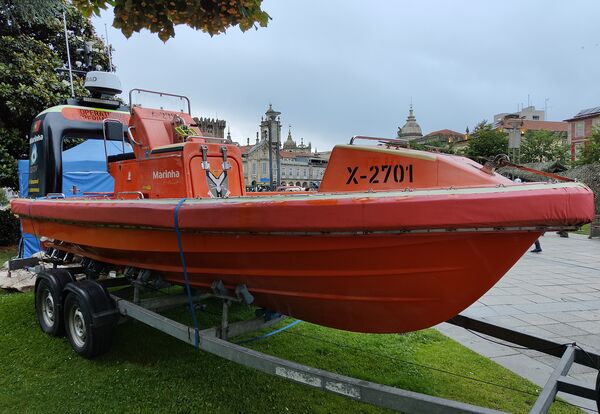
The X-2701 is being developed by the Portuguese Navy to play a variety of roles. (Janes/Victor Barreira)
The Portuguese Navy's Unmanned Vehicles Experimentation Cell (CEOV) is developing a multimission armed unmanned surface vehicle (USV) for operational experimentation, CEOV Commander Marco Pinto Guimarães told Janes.
The USV, called X-2701, is being developed with the support of the Portuguese Navy Ships Support Service for training missions in conditions up to Sea State 4. It will be used to replicate asymmetric threat attacks from small vessels, for surface live-fire training, protection and combat training against asymmetric threats, or for towing an inflatable target. It can also be used to conduct patrol and surveillance missions.
The X-2701 hull is a converted Harding Safety FRB 650 high-speed fast-rescue boat received in 2016 for the Portuguese Navy's Tejo-class patrol boats. The 6.7 m-long rigid V-shaped hull is made of fire-retardant glass fibre-reinforced polyester (GRP).
It is powered by a 170 hp inboard diesel engine, coupled to an Alamarin-Jet AJ 230 water-jet.
The X-2701 is equipped with the Simrad 4G broadband radar, communications and navigation systems, a light emitting diode (LED) light bar, and a long-range (LoRa) embedded mesh wireless 433 MHz radio frequency module.
An electro-optical sensor and a long-range light detection and ranging (LiDAR) sensor system is planned to be added.
The X-2701 is planned to be armed with a remote weapon station armed with a government-furnished 7.62×51 mm MG3 machine gun or a 30×113 mm DEFA 552A cannon.
A second FRB 650 and an existing 12 m-long rigid-hulled inflatable boat will also be converted to USVs in the future.
Looking to read the full article?
Gain unlimited access to Janes news and more...







